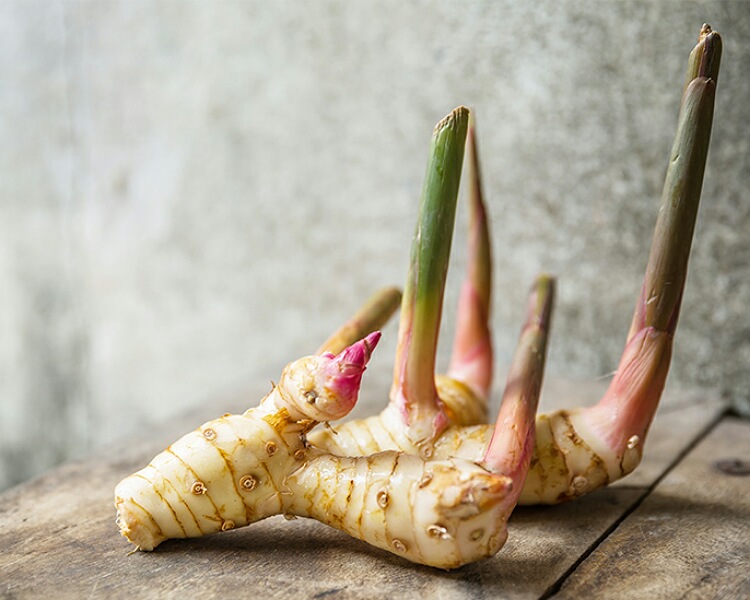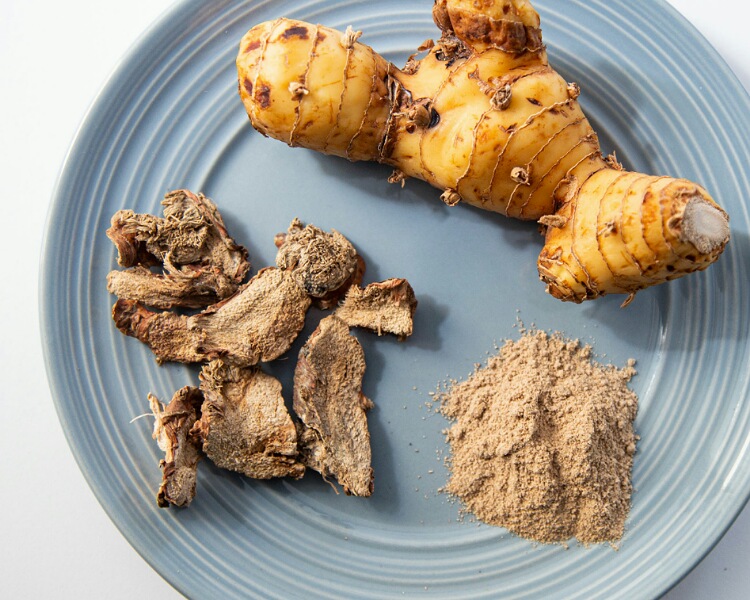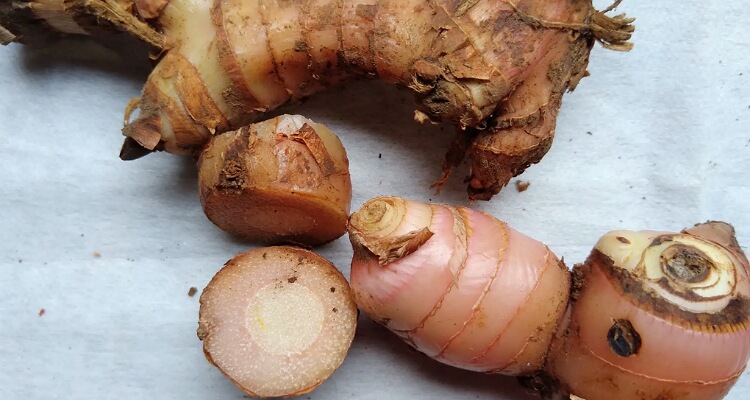Galangal root is a spice common in South East Asia. It is part of their cuisine. It belongs to the Zingiberaceae family and shares its nature and properties.
But it has additional health benefits? What are these health reasons to incorporate this food into our food recipes?
Galangal root and its uses
Galangal root is a rhizomatous spice that grows in South East Asia. Hence it is very much a part of the cuisine there. People from China, Thailand, Malaysia, and Indonesia add it to their various ethnic food dishes.

The spice is the root of a plant of the Zingiberaceae family. This family includes ginger and turmeric. Galangal has medicinal properties and also is part of Chinese traditional medicine.
The root of the plant Lesser galangal or Alpinia officinarum commonly forms part of food dishes in South East Asia. Tastewise is spicier, sharper, and more peppery than ginger. But similar to it, one can have galangal in fresh or dried form and even powdered form.
Potential Health benefits
Galangal root has a good reputation in traditional ancient medicine. Increasingly studies on it have found good results.
Good source of antioxidants
Galangal is rich in antioxidant polyphenols. These reduce cell damage, prevent mental decline, protect against type 2 diabetes and lower bad cholesterol in the blood.
Hence galangal protects the consumer from cognitive decline with age, type 2 diabetes mellitus, and heart diseases. These benefits are extrapolated from studies on ginger and turmeric. There are no direct studies linking these benefits to galangal yet.
Prevents certain cancers

In vitro studies have shown that galanin in these tubers kills cancer cells and prevents their spread. One study has revealed the killing potential of colon cancer cells. It also protects from breast, skin, liver, and bile duct cancers. But human studies are required for confirmation.
Boosts male fertility
There is growing proof that this root can boost male fertility. An animal study has shown that mice fed this extract have higher sperm counts and their improved motility.
A human study on 66 men over 3 months also confirmed its benefit in improving sperm motility in them. But pomegranate fruit juice was also used in them. Hence it is unclear whether the benefit was due to galangal or pomegranate. This specific benefit has not been reported with ginger or turmeric.
Anti-inflammatory
Galangal possesses inflammation-fighting capacity. It brings down pain. It has a phytochemical called HMP that fights inflammation. In a 6 weeks study on osteoarthritis pain, it did relieve the pain more in the treated group.

Anti-infective properties
Essential oil from galangal helps fight microorganisms. Added to recipes, the chances of food-borne infection reduce. It increases the shelf life of foods in which it is an ingredient.
In vitro studies show its killing ability against E. coli, Staphyloccocus aureus, and Salmonella Typhi. It also has anti-fungal and anti-parasitic action.
Also, read Easy way to make Ginger Miso Dressing. (With 6 easy ingredients)
Galangal is safe. In high doses, it could lead to nausea, loose motions, increased urine output, coma, and death. But these were found in animals and no side effects have been reported in humans.
